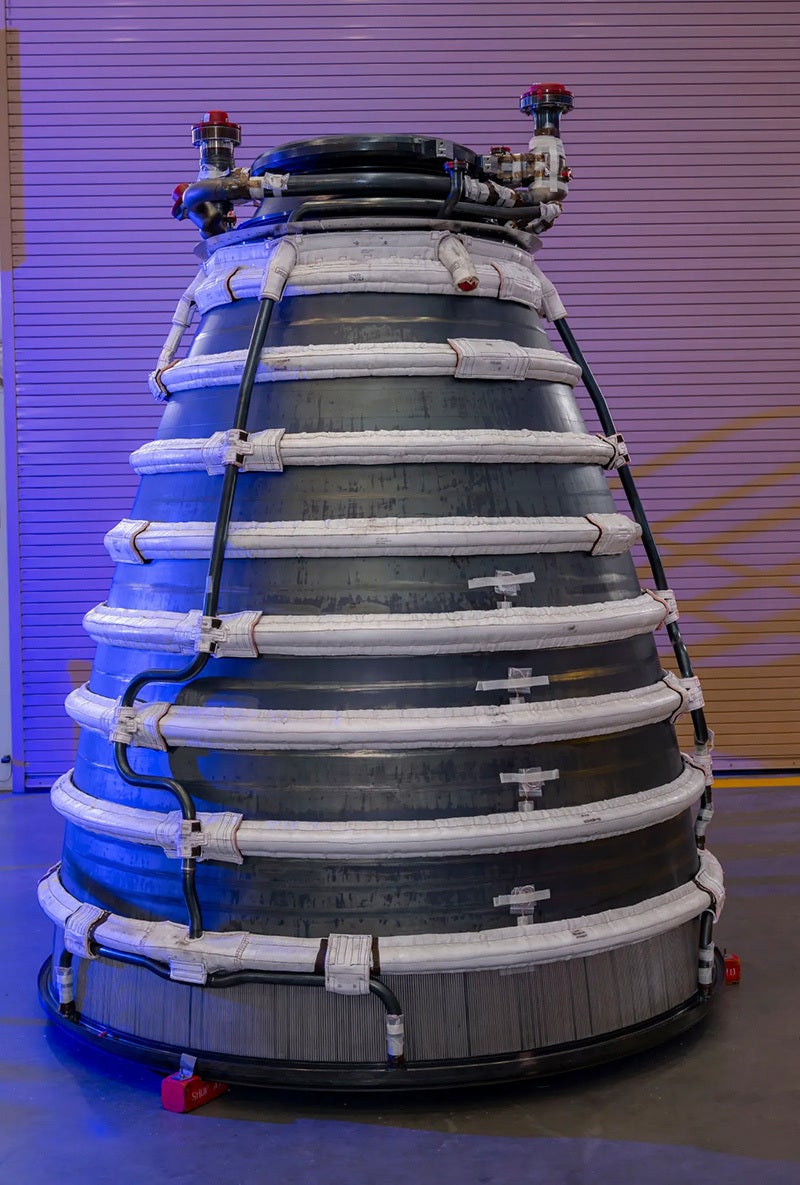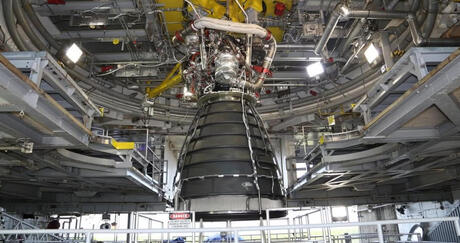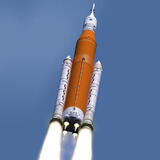Introducing redesigned components required restarting supply chains and production lines across the nation, and qualifying new processes and suppliers where necessary. The major redesigned RS-25 components include:
Pogo Accumulator
One of the first components to be upgraded was the Pogo Accumulator Assembly, which the team chose to additively manufacture, or 3D print. The “Pogo,” which is about the size of a beach ball, is a complex and critical component that dampens pressure oscillations that can cause a rocket to become unstable in flight. The team successfully reduced the number of system welds by 78% and confirmed that 3D printing was a viable path for other components. Today, more than 30 components on the new engine design leverage 3D printing.
Main Combustion Chamber
The Main Combustion Chambers (MCC) for the new production engines are assembled using a bonding technique called Hot Isostatic Pressing (HIP) that employs high pressure and heat to create bonds between engine details that can withstand extremely high-stress applications. In the case of the RS-25 MCC, where the engine’s “smoke and fire” initiates, that means withstanding combustion temperatures exceeding 6,000 degrees Fahrenheit and pressures over 3,000 psi. Additionally, HIP bonding is a more predictable process, which greatly reduces process variation. The HIP-bonded MCC is the single-largest affordability improvement incorporated into the new RS-25 engines. It cuts in half both the cost and fabrication cycle time compared to the heritage space shuttle main engines.
Engine Controller
The controller is often referred to as the “brain” of the engine because it translates the vehicle’s commands into engine action while monitoring engine health. It makes real-time adjustments to control engine thrust and mixture ratio and monitors critical parameters, such as turbopump speed, combustion pressures, and engine vibration. The new controller has 20 times the processing capability of the shuttle-era controller, weighs 50% less, and offers increased reliability.
Nozzle
The team upgraded the nozzle, which directs engine thrust, for better producibility. The
nozzle is the RS-25’s most labor-intensive and difficult-to-manufacture component. It also must withstand the minus 423 degrees Fahrenheit temperatures from liquid hydrogen flowing through its tubes and hot combustion gases at roughly 6,000 degrees Fahrenheit passing just a fraction of an inch away. The team learned as it incorporated new manufacturing tools and techniques into the initial production units of the new design. For example, between the first and fourth units, the team reduced tube-stacking touch labor hours by 50%. On the fourth unit, the team beat their affordability target by 17%, and reduced scrapped tubes by 90%, compared to the previous three units.
“When we fly, we want to see the engine perform perfectly. When we test, we’re testing to the extreme limits of operation to ensure the engines can complete the mission with margin. This includes different inlet conditions, high-power, low-power, emergency shutdowns, turning off and on hydraulics, etc.,” said Lauer. “This test series also demonstrated the engine’s performance at off-nominal conditions, which is critical to the flight safety of the vehicle.”
The engines were put through their paces with 69 hot-fire tests to ensure they could meet the new performance demands of the next design block of the SLS rocket, Block 1B.
“Successfully completing this rigorous test series is a testament to the outstanding work done by the team to design, implement, and test this upgraded version of the RS-25,” added Lauer. “We accumulated about 34,000 seconds of hot fire test time between the development, retrofit, and certification tests, demonstrating these new engines are ready to safely launch astronauts to the Moon and beyond.”





